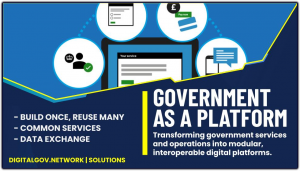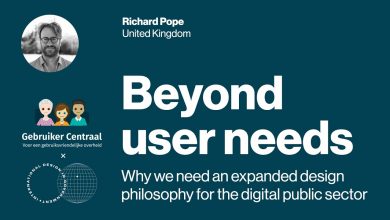What is ‘Government as a Platform
Government as a Platform (GaaP) reimagines how public services are delivered by treating government operations as a modular, digital ecosystem built on shared, reusable components.
 Government as a Platform (GaaP) is a model for delivering public services that reimagines government operations as a modular, digital ecosystem built on shared, reusable components.
Government as a Platform (GaaP) is a model for delivering public services that reimagines government operations as a modular, digital ecosystem built on shared, reusable components.
It draws inspiration from platform engineering principles, treating government infrastructure like a technology platform to streamline service delivery, enhance citizen experience, and improve operational efficiency.
In GaaP, government services are built on a foundation of standardized, interoperable digital tools, APIs, and data systems that can be shared across departments and agencies.
Instead of each agency developing siloed systems, GaaP provides a centralized framework of reusable components—such as identity verification, payment systems, or data-sharing protocols—that agencies can leverage to build and deliver services. This approach mirrors how commercial platforms (e.g., AWS or Google) enable businesses to build applications using shared infrastructure.
What is ‘Government as a Platform’?
At its core, GaaP focuses on modularity and interoperability, allowing government agencies to integrate and share data seamlessly through standardized APIs and formats. This enables faster development of services, reduces duplication of effort, and ensures a consistent experience for citizens, who can access services through unified portals like GOV.UK in the UK.
By prioritizing citizen-centric design, GaaP makes interactions with government simpler and more accessible, whether through a single sign-on system or a streamlined payment process. The platform’s scalability also allows governments to adapt quickly to new policy demands or emergencies, fostering agility in service delivery.
Shared Efficiencies
The benefits of GaaP are significant. It reduces costs by minimizing redundant development, promotes transparency through open data standards, and encourages collaboration between government, private sector, and citizens. As this Harvard white paper describes:
“There is a lot of duplication in government. Generally, departments and agencies are vertically integrated, with each running its own version of a system (a public website, a payment gateway, a printing service, an address lookup, etc.) that’s similar but not identical to all the others. Platforms have been cited as a way to remove that duplication and break down organizational silos.
“Siloed approaches to transformation don’t work,” – Mike Bracken wrote in 2015. “Reinventing the wheel every single time we build a service has led to far too much duplication and waste. That’s not good enough.”
However, challenges remain, including the complexity of integrating legacy systems, ensuring robust security and privacy, and navigating governance issues across agencies with differing priorities.
Examples like the UK’s GOV.UK platform, Estonia’s X-Road data exchange, or the US’s Login.gov illustrate GaaP’s potential to transform government into a cohesive, digital-first ecosystem. By embracing this model, governments can deliver services more efficiently, respond to citizen needs faster, and build greater trust through improved accessibility and accountability.




